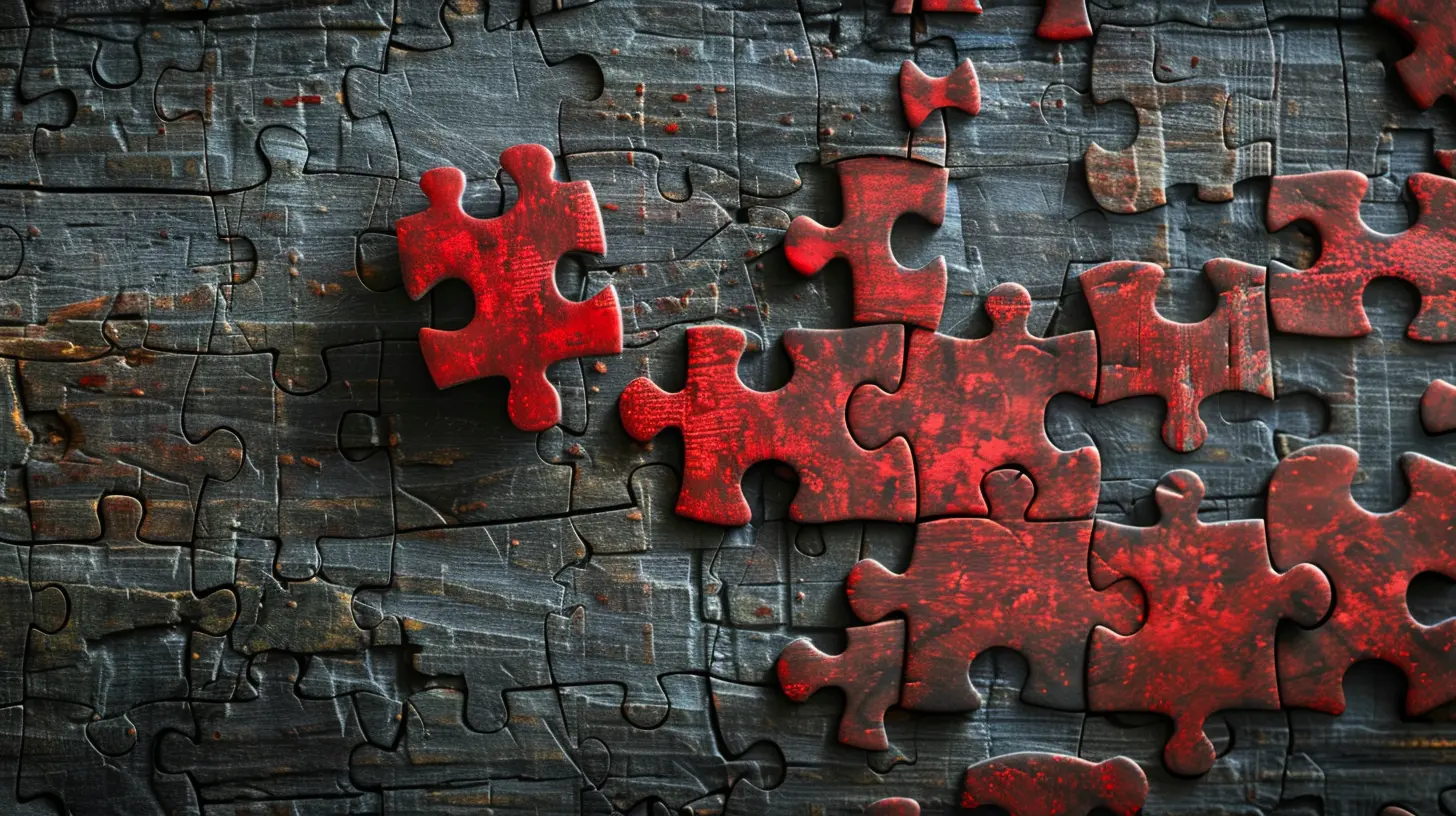How to Use Failure as a Tool for Problem-Solving Success
31 July 2025
We’ve all been there. That gut-wrenching feeling when things fall apart. The test you failed, the big idea that flopped, the project that didn’t quite land. It stings—bad. But what if I told you failure isn’t the villain we make it out to be? What if—bear with me here—failure is actually your greatest teacher?
Sounds strange, right? But let’s slow down and unpack this. You see, failure isn't the end of the road. It's actually a detour—often the most scenic one—on the way to problem-solving success. Let’s dive into how you can flip failure on its head and use it as a launchpad for smarter thinking, sharper decisions, and stronger outcomes.

Why Failure Gets a Bad Rap
Let’s face it. From a young age, we’re taught that failure is something to avoid at all costs. Red Xs on homework, missed shots in sports, the dreaded “F” on a report card. Society has trained us to win, achieve, and succeed—and anything short of that feels like personal defeat.But here's the kicker: no one who's ever done anything meaningful has escaped failure. From Edison’s lightbulb experiments to Rowling’s rejected manuscripts, failure is woven into every success story you’ve ever heard.
So why are we so afraid of it? Part of it is ego. Part of it is fear of judgment. But mostly, we just haven’t been taught how to use failure right.

The Mindset Shift: From Fixed to Growth
Before we go any further, let’s chat mindset. Carol Dweck, a psychologist you've probably heard quoted in TED Talks, introduced this concept of a "growth mindset"—the belief that you can develop your abilities through effort, learning, and yes, failure.So, when you hit a wall, instead of thinking, “I’m terrible at this,” you tell yourself, “What can I learn from this?” That little switch flips the entire game.
It's like playing a video game. When you fail a level, you don’t quit the game—you figure out what you missed, learn the pattern, and try again. Why should life be any different?

Why Failure Matters in Problem-Solving
Alright, let’s cut to the chase. If you’re solving a problem—whether it’s academic, personal, or professional—failure is gold. Here’s why:1. It Shows You What Doesn’t Work
Trial and error is the oldest form of learning. If Plan A flops, that’s not the end—it's just step one in ruling out the wrong paths. Think of every failed attempt as crossing off an option on your checklist.Take Thomas Edison, who famously said, “I have not failed. I've just found 10,000 ways that won't work.” That’s not delusion—that’s precision.
2. It Builds Resilience
Every failure adds a layer to your mental armor. The more you face setbacks, the better you get at dealing with them. Over time, what once felt like catastrophe begins to look like feedback.Resilience is the secret weapon of every successful problem-solver. The ability to get back up—not just once, but every time—sets you miles apart.
3. It Sparks Innovation
Failure often forces you to look at a problem differently. Sometimes, you only notice the side doors when the front door slams in your face. Many of the world’s greatest innovations came from mistakes—like penicillin or Post-it notes.So the next time something goes wrong, don’t just fix it. Ask, “What opportunity is hiding in this mess?”

How to Actually Use Failure (Instead of Just Sulking in It)
Talking about failure is one thing—but using it? That takes practice. Here’s a roadmap to guide you through using failure deliberately and successfully:Step 1: Acknowledge It (Don’t Sugarcoat It)
Let’s be real: failure sucks. There’s no need to pretend it doesn’t. Ignoring it or blaming others only delays growth. Sit with it. Feel it. Accept it. Then move forward.Reflect on what happened without beating yourself up. Ask:
- What exactly went wrong?
- Were there signs I ignored?
- Did I misjudge the situation?
Think like a detective, not a judge.
Step 2: Reframe the Narrative
This may sound cheesy, but language shapes mindset. If you tell yourself, “I’m a failure,” you’ll act like one. But if you say, “That strategy failed,” you're free to try another.Don’t fuse your identity with the outcome. You’re the driver, not the flat tire.
Step 3: Analyze the Root Cause
Failures are symptoms. To fix them, you need to get to the cause.Let’s say you bombed a class presentation. Was it lack of prep? Fear of public speaking? Misunderstanding the topic? Whatever it is, name it. Only then can you begin to solve the actual problem.
Root cause analysis is the bridge between failing and learning.
Step 4: Extract the Lesson
Here’s the juicy part: lessons.Every failure carries one—you just have to look for it. Make it a habit to ask:
- What would I do differently next time?
- What have I learned about the situation—and myself?
- How can this experience inform future decisions?
Journaling can help here. It gives structure to your reflection and makes the lesson stick.
Step 5: Adjust & Experiment Again
Use what you’ve learned to shift your approach. Try new tactics. Tweak your strategies. Build on what you know now that you didn’t know before.The best problem-solvers don’t just try harder—they try smarter.
Step 6: Normalize Failure in Your Life
This might be the hardest part. You’ve got to make peace with failing. Talk about it. Laugh about it. Share your failure stories with friends or mentors.When failure becomes something you expect and embrace—not fear—your tolerance for risk and creativity skyrockets.
Real-World Examples: How Failure Led to Problem-Solving Breakthroughs
Abstract ideas are cool, but let’s get real. Here are a few people who turned failure into a powerful problem-solving tool:Elon Musk – Failures in Rockets
Musk’s early SpaceX launches were flat-out disasters. Rockets exploded. Millions were lost. Critics called him reckless. But with every implosion, Musk and his team studied the numbers, tweaked the designs, and eventually launched the reusable rockets that changed aerospace forever.J.K. Rowling – Rejection to Revolution
Rowling’s first Harry Potter manuscript was rejected by TWELVE publishers. That’s a dozen doors slammed shut. But instead of quitting, she refined her pitch and kept trying—until one yes turned her into a global phenomenon.Steve Jobs – Fired Then Rehired
Jobs was fired from Apple, the very company he helped start. Most people would’ve disappeared. He didn’t. Instead, he launched NeXT and bought Pixar, learning new strategies and leadership styles. Years later, Apple wanted him back—and the rest is iPhone history.Each of these stories has failure at the core—but they also have learning, persistence, and a commitment to seeing failure as fertile ground for growth.
Tips to Build a Failure-First Problem-Solving Culture
Whether you’re working solo, managing a team, or studying with peers, creating a failure-tolerant environment can fuel innovation. Here’s how:Encourage Curiosity Over Perfection
Reward questions. Celebrate attempts. Focus on exploration, not just outcomes.Build Psychological Safety
People need to feel safe to fail. No blame games. No public shaming. Just honest conversations about what went wrong and why.Reflect Regularly
Hold “failure retrospectives” after projects. Ask what worked, what didn’t, and what could be done better next time. Make it a habit.Final Thoughts: From Stumbling to Soaring
Here’s the truth most folks won’t tell you: failure is required. It’s not a side effect of success—it’s a prerequisite.The trick is to stop fearing it and start using it. When failure becomes your feedback loop, every setback becomes an opportunity to evolve, adapt, and solve problems with more insight and creativity than ever before.
The next time something doesn’t go your way, don’t hide from it. Grab a notebook, dig into the why, and start planning your next move. Because you didn’t fail—you gathered data. And data, my friend, is the compass of every problem-solver.
all images in this post were generated using AI tools
Category:
Problem SolvingAuthor:

Monica O`Neal
Discussion
rate this article
1 comments
Isadora McLaury
Embrace failure like a quirky sidekick on your problem-solving adventure! With each stumble, you're just gathering clues for your next big triumph. Remember, every mishap is a step closer to superhero status!
August 7, 2025 at 4:37 AM

Monica O`Neal
Absolutely! Embracing failure as part of the journey allows us to learn and grow, ultimately paving the way for success. Every setback is indeed a valuable lesson!


